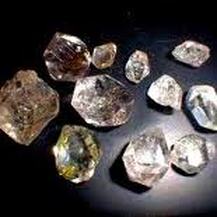Economy

Mineral exports, agriculture, and tourism are the main foreign currency earners of Zimbabwe.The mining sector remains very lucrative, with some of the world's largest platinum reserves being mined by Anglo-American and ImpalaPlatinum. Zimbabwe is the biggest trading partner of South Africa on the continent.
Zimbabwe maintained positive economic growth throughout the 1980s (5.0% GDP growth per year) and 1990s (4.3% GDP growth per year). However, the economy declined from 2000: 5% decline in 2000, 8% in 2001, 12% in 2002 and 18% in 2003. The government of Zimbabwe faces a variety of economic problems after having abandoned earlier efforts to develop a market-oriented economy. Problems include a shortage of foreign exchange, soaring inflation, and supply shortages. Zimbabwe's involvement from 1998 to 2002 in the war in the Democratic Republic of the Congodrained hundreds of millions of dollars from the economy.
The downward spiral of the economy has been attributed mainly to mismanagement and corruption of the Mugabe regime and the eviction of more than 4,000 white farmers in the controversial land redistribution of 2000.Zimbabwe was previously an exporter of maize but has become a net importer.[81] Tobacco exports and other exports of crops have also declined sharply.
Tourism was an important industry for the country, but has been failing in recent years. The Zimbabwe Conservation Task Force released a report in June 2007, estimating 60% of Zimbabwe's wildlife has died since 2000 due to poaching and deforestation. The report warns that the loss of life combined with widespread deforestation is potentially disastrous for the tourist industry.
Zimbabwe maintained positive economic growth throughout the 1980s (5.0% GDP growth per year) and 1990s (4.3% GDP growth per year). However, the economy declined from 2000: 5% decline in 2000, 8% in 2001, 12% in 2002 and 18% in 2003. The government of Zimbabwe faces a variety of economic problems after having abandoned earlier efforts to develop a market-oriented economy. Problems include a shortage of foreign exchange, soaring inflation, and supply shortages. Zimbabwe's involvement from 1998 to 2002 in the war in the Democratic Republic of the Congodrained hundreds of millions of dollars from the economy.
The downward spiral of the economy has been attributed mainly to mismanagement and corruption of the Mugabe regime and the eviction of more than 4,000 white farmers in the controversial land redistribution of 2000.Zimbabwe was previously an exporter of maize but has become a net importer.[81] Tobacco exports and other exports of crops have also declined sharply.
Tourism was an important industry for the country, but has been failing in recent years. The Zimbabwe Conservation Task Force released a report in June 2007, estimating 60% of Zimbabwe's wildlife has died since 2000 due to poaching and deforestation. The report warns that the loss of life combined with widespread deforestation is potentially disastrous for the tourist industry.
